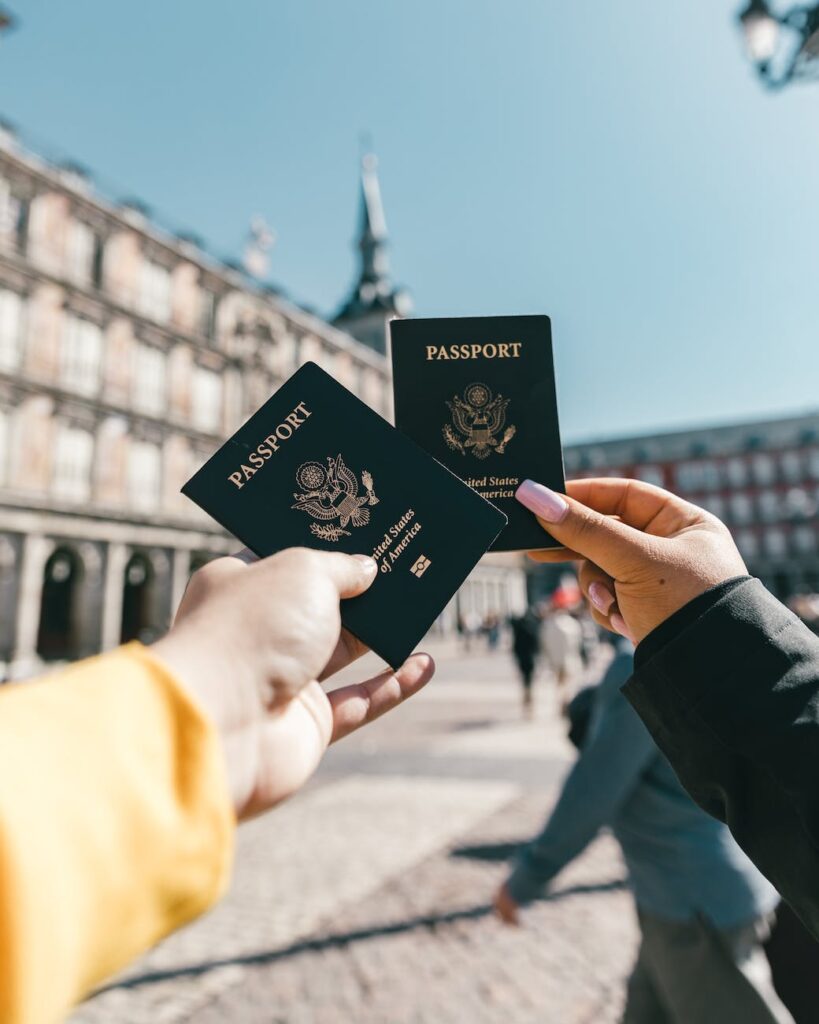As a foreign national who wishes to travel to the United States you will need a visa, It could be a long term immigrant visa or a shortterm non immigrant visa.
Anyone applying for a US visa must have to prove that they are willing to comply with the country’s rules and regulations and return when necessary.
Types of U.S. Visa
Immigrant visas (Green Card)
This type of visa can only be issued to individuals who have the intention of staying in the United States permanently, and have some special requirements to be met by the applicant.
An application for a U.S. immigrant visa normally entails three steps such as filing a petition, going to an interview, and submitting to background and security checks.
Types of U.S. immigrant visas, including:
- EB-1 (Priority Workers)
- EB-2 (Advanced Degrees/Exceptional Ability)
- EB-3 (Skilled Workers, Professionals and other Workers)
- EB-4 (Special Immigrants including Religious Workers)
- EB-5 (Immigration Investor Program)
2: Non-immigrant U.S. visas
Unlike the immigrant visa, individuals may temporarily enter the United States on a non immigrant visa for activities like tourism, study, or employment.
Non immigrant visas are frequently provided for a brief stay and are subject to particular requirements and limitations.
A non immigrant visa application must be submitted along with supporting documentation to a U.S. embassy or consulate in order to be granted, and applicants must also meet specific eligibility requirements.
Types Of Non-immigrant U.S. visas
There are many types of non-immigrant visas in the United States, but some common ones include:
- B-1 Business Visitor Visa
- B-2 Tourist Visa
- F-1 Student Visa
- H-1B Specialty Occupation Visa
- L-1 Intracompany Transferee Visa
What Is A US Student Visa?
A US student visa is a non immigrant kind of visa that is issued to individuals from other countries with the main purpose of studying in the United States.
This type of visa is also known as the F-1 student visa that allows foreign students to study in the United States at an accredited academic institution.
Also Read: 94 Visa-Free Countries For South Africans
The length of your stay depends on the course you enroll in. The I-20 form that the university you want to attend will give you will include the program’s expiration date on it. This will give you a general idea of how long you will be able to stay in the US, and you will need to acquire your degree before the indicated expiration date.
What Is I-20 Form?
The I-20 Form is evidence that you were legitimately enrolled in a study program in the US, gotten from the institute you applied for.
Student US Visa Eligibility And How To Apply
Before you apply for a US student visa you have to be sure of your eligibility, in order not to spend money unnecessarily, there are few necessary steps you need to take.
1: Institution certification or acceptance:
You must have received admission to an American university after you have applied and got approved by the Student and Exchange Visitor Program (SEVP).
2: Financial support:
You must prove that you have the resources necessary to pay for your studies and living costs while you are in the United States.
3: English language proficiency:
You must demonstrate a sufficient level of English proficiency to participate in your chosen program of study or qualify for a US student visa.
4: Valid passport:
As expected, you must have a passport that has at least six months validity even after your program completion date.
5: A clear criminal record:
You must not have a criminal record and must not pose a security threat to the U.S.
6: Home country residency:
You must have a residence in your native nation where you can return after receiving your degree.
Note: These specifications are generic and could require more based on your country.
How To Apply For A Student US Student Visa
1: Before anything else, you should make sure you have been accepted by a SEVP-certified institution before submitting your visa application. And that you have received an I-20 form, which you will need to apply for your F-1 visa or a US student visa.
2: Make sure you pay every cent you are required to pay as SEVIS fee and keep the receipt, the fee is $350.
3: Complete the online visa application DS-160, the DS-160 is the nonimmigrant visa application form that you must fill out and submit online which costs $160.
4: Schedule Your Interview, visit the nearest embassy or consulate and make an appointment sooner the better.
5: Getting ready for the interview. Bring any necessary documentation, including the Form I-20, passport, and any other records demonstrating your ties to your native country and your intention to return there once your studies are through.
Give honest responses to the consulate officer’s inquiries, and deliver any required paperwork. If you qualify for a student visa, the consular official will decide.
Requirements:

- A valid passport
- A copy of passport photo you will use for your visa
- Printed copies of your DS-160 and I-901 SEVIS payment confirmations
- I-20 form
- School transcript and official test scores cited on your university application
- Diploma (If required)
- Bank statements or other proof of finances
These are the documents that will also be required at the interview for further evaluation. Make sure they are all ready.
Additionally, Academic records such as transcripts, diplomas, degrees, or certificates from schools you attended, Standardized test scores required by your US institution, Evidence of your intent to depart the United States upon completion of your course of study, Statements proving your ability to pay all educational, living, and travel costs might also be requested for.
Conclusion
You shouldn’t be afraid of the interview as long as you have all the documents in place, most questions they will ask are in a way related to the required documents you have gotten.
